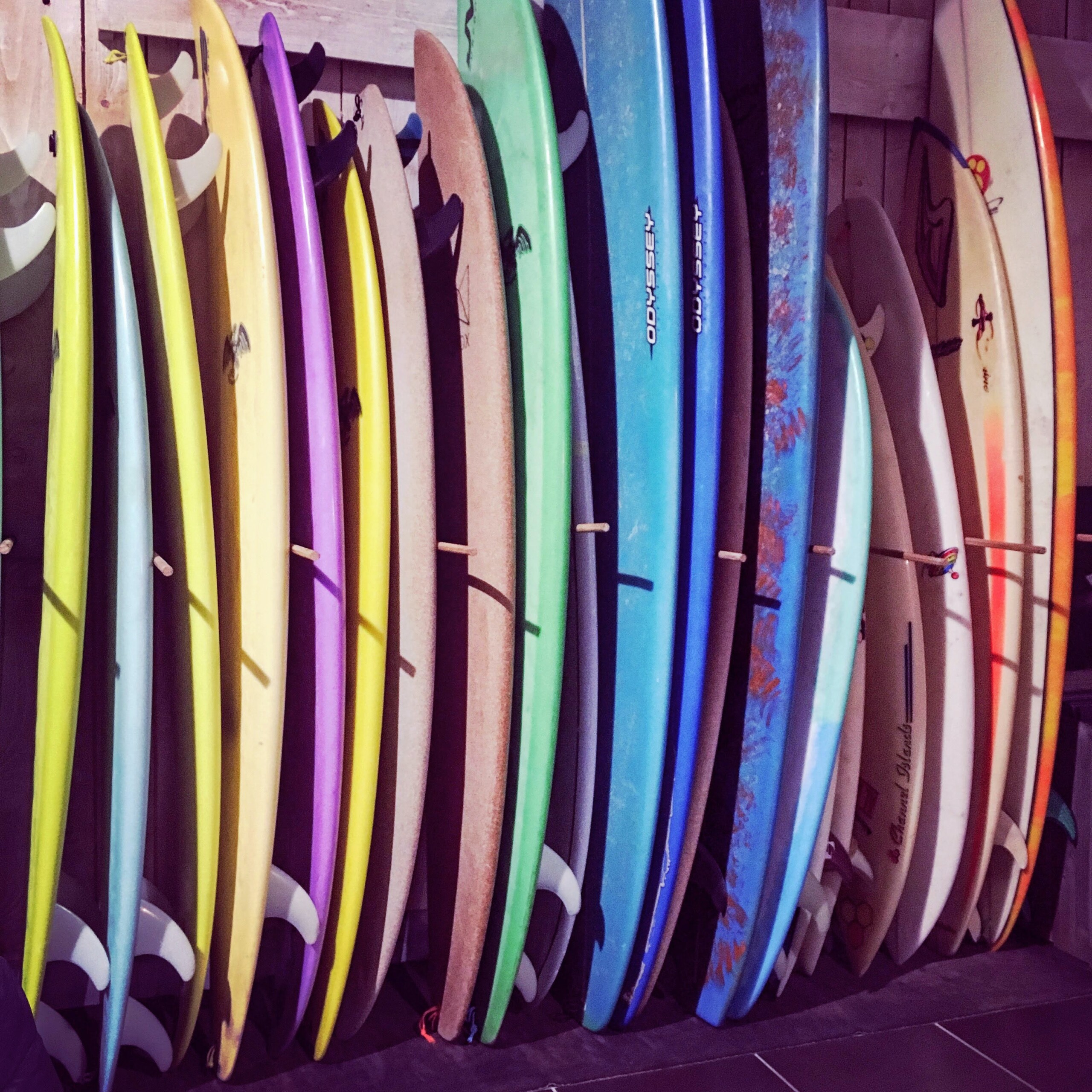There are several types of surfboards designed for different types of waves and surfing styles. Here are some of the most common types:
- Longboard: Longboards are characterized by their length, typically 9 to 12 feet. They are stable and great for beginners. Longboards are ideal for small waves and offer a more relaxed style of surfing.
- Shortboard: Shortboards are much smaller in size, typically ranging from 5 to 7 feet. They are designed for more advanced surfers and are highly maneuverable, making them suitable for riding steep and powerful waves.
- Funboard: Funboards are an intermediate option, typically around 7 to 8 feet in length. They combine some of the stability of a longboard with the maneuverability of a shortboard, making them versatile for various wave conditions.
- Fish: Fish surfboards are short and wide with a swallowtail shape. They are great for smaller, mushy waves and are known for their speed and maneuverability.
- Gun: Guns are long and narrow boards designed for big wave surfing. They can range from 7 to 12 feet in length and are built to handle powerful, large waves.
- Hybrid: Hybrid surfboards combine features from various board types to create versatile options suitable for different conditions. They often have characteristics of both shortboards and longboards.
- Mini Malibu: Mini Malibus are shorter versions of traditional longboards, typically around 7 to 8 feet. They offer a compromise between longboards and shortboards, providing stability and maneuverability.
- Soft-Top: Soft-top surfboards have a foam deck, making them great for beginners due to their forgiving nature. They are stable and less likely to cause injuries.
- Epoxy Boards: Epoxy boards are made from a different material than traditional fiberglass boards. They are known for being lightweight and durable and are often used for shortboards and high-performance surfing.
- Tow-In Boards: Tow-in boards are specifically designed for tow-in surfing, where a personal watercraft tows the surfer into very large, powerful waves that can’t be paddled into. These boards are typically short and highly maneuverable.
- Stand-Up Paddleboards (SUP): These are large, stable boards designed for standing up and using a paddle to catch waves. They offer a different surfing experience and are suitable for various conditions, including small waves and flatwater paddling.
- Bodyboards: While not surfboards in the traditional sense, bodyboards are short, rectangular foam boards designed for riding waves while lying on your stomach. They are especially popular in smaller waves.
Each type of surfboard has its own unique characteristics and is suited to specific surf conditions and skill levels. The choice of surfboard depends on your surfing style, experience level, and the types of waves you plan to ride.











